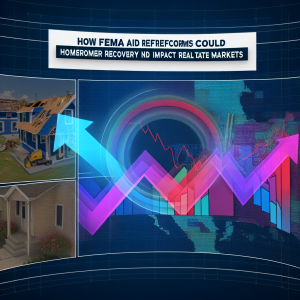As the Trump administration signals a major shift in disaster relief by moving to wind down FEMA, homeowners and investors face a new reality that demands sharper financial foresight and preparedness. This pivot could fundamentally reshape how Americans recover from natural disasters—and savvy investors need to understand the implications now to protect their assets and advise clients effectively.
FEMA’s Future: From Federal Lifeline to Local Responsibility
President Donald Trump’s announcement to phase out FEMA after the 2025 hurricane season marks a seismic change in disaster management. Instead of funneling aid through FEMA, disaster funds will be “given out directly” from the president’s office, aiming for a streamlined but less predictable process. Meanwhile, the Department of Homeland Security (DHS) has proposed cutting FEMA’s budget by $646 million for fiscal 2026 and recently ended a key disaster prevention grant program, returning nearly $900 million to the Treasury.
This is not just a budgetary adjustment—it’s a strategic retreat from a federal safety net that has long supported disaster recovery. Experts like Charles Nyce, risk management professor at Florida State University, warn this puts “more of an onus on citizens to be prepared.” Jeremy Porter from First Street Foundation echoes this, noting states and municipalities will shoulder a heavier financial burden in disaster recovery efforts.
Why This Matters to Investors and Advisors
FEMA’s aid has never been a substitute for comprehensive insurance but rather a crucial supplement for uninsured losses and emergency needs. The average FEMA individual assistance grant payout from 2010-2019 was about $3,522—a modest sum compared to the often staggering costs of disaster recovery.
With FEMA’s downsizing, investors and financial advisors must rethink risk management strategies. Here’s what you need to do differently:
-
Reevaluate Insurance Coverage: Homeowners should scrutinize their policies to avoid costly underinsurance. Flood insurance, often excluded from standard policies, is becoming indispensable as climate change intensifies flood risks. According to the National Flood Insurance Program, over 20% of flood claims come from properties outside high-risk flood zones—a stark reminder that many are underprotected.
-
Promote Disaster Preparedness: Encourage clients to maintain emergency supplies and secure vital documents. This simple step can mitigate immediate post-disaster chaos and financial disruption.
- Advocate for State and Local Engagement: With states bearing more recovery responsibility, investors should monitor local government disaster readiness and fiscal health. Municipal bonds from regions with robust disaster preparedness may become safer investments, while those from underfunded areas could carry heightened risk.
A Unique Perspective: The Growing Role of Private Markets
One trend under the radar is the increasing role of private insurers and alternative risk transfer mechanisms stepping in to fill gaps left by shrinking federal aid. Parametric insurance products, which pay out based on the occurrence of specified events like hurricanes or earthquakes rather than actual losses, are gaining traction. For example, in 2024, a Caribbean island nation successfully used parametric insurance to receive rapid payouts after a hurricane, bypassing lengthy claims processes.
Investors should watch for growth in these innovative insurance markets, which may offer new opportunities but also require sophisticated understanding of risk modeling and climate trends.
What’s Next? Forecast and Action Plan
-
Increased Insurance Premiums and Market Volatility: Reduced federal aid could drive up insurance premiums as private insurers adjust for higher risk exposure. This may also increase market volatility in real estate and municipal bonds in disaster-prone areas.
-
Greater Emphasis on Climate Risk Disclosure: Investors will demand more transparency from companies and municipalities about their disaster preparedness and climate resilience.
- Policy Advocacy: Financial advisors and investors should engage in advocacy for stronger state and federal disaster mitigation funding and smarter urban planning to reduce future losses.
Final Takeaway: Prepare for a New Era of Disaster Risk
The wind-down of FEMA signals a paradigm shift that will ripple through insurance markets, state budgets, and personal financial planning. At Extreme Investor Network, we urge investors and advisors to act now—review insurance policies, diversify portfolios to include climate-resilient assets, and stay informed on evolving disaster legislation. The era of relying on a federal safety net is fading; proactive, informed financial strategies are the new frontline defense against natural disasters.
Sources:
- Brookings Institution, “FEMA’s Individual Assistance Grants: Trends and Implications,” 2024
- National Flood Insurance Program, FEMA, 2023 Data
- First Street Foundation, Climate Risk Reports, 2024
- Reuters, CNBC coverage on FEMA budget and policy changes, 2025
By anticipating these changes and adjusting strategies accordingly, investors can not only protect their portfolios but also capitalize on emerging opportunities in the evolving landscape of disaster risk management.
Source: What changes to FEMA aid may mean for homeowners

